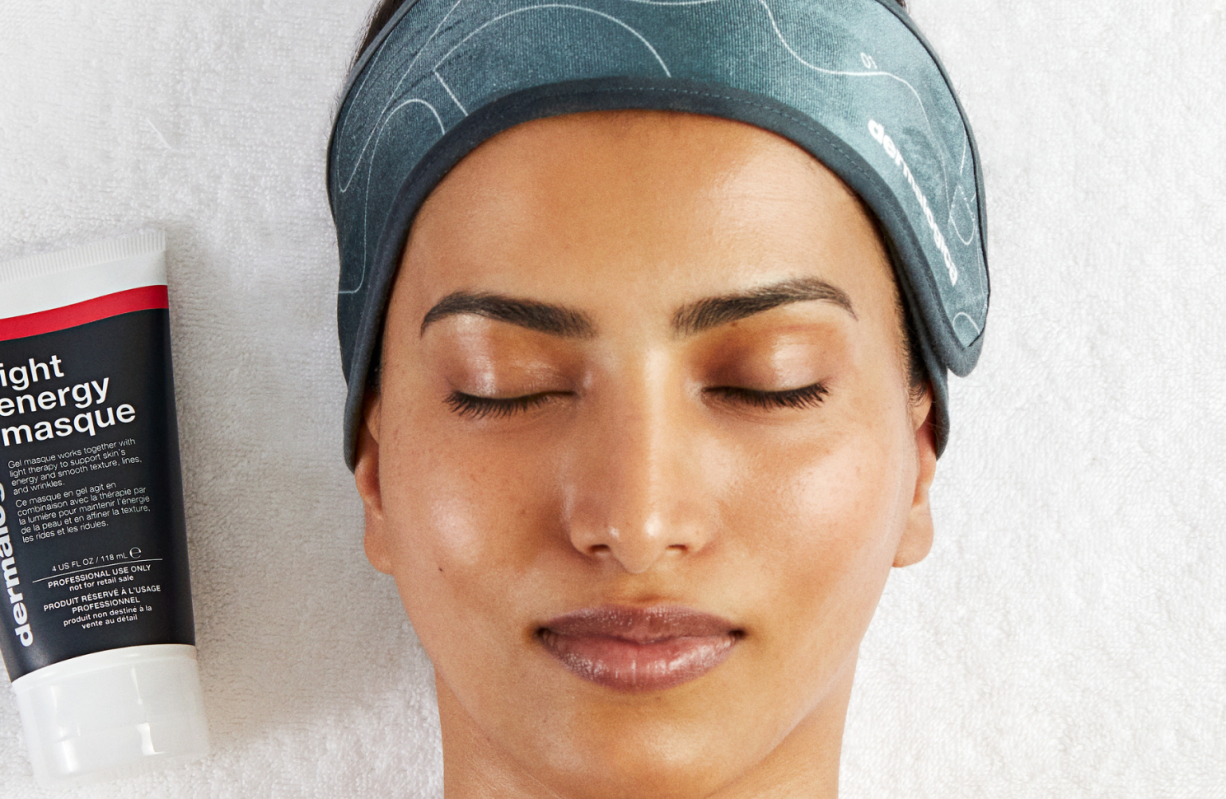The Power of Light Therapy
Light emitting diode has been used in skin clinics for several years; however, LED was first discovered in 1962. This technology was originally developed by NASA, to grow plant life forms during shuttle experiments but was later discovered to have the potential for accelerating wound healing of the skin. This low energy, non-ablative device emits an exact wavelength into the skin to stimulate and energise cellular activity. In fact, a study by NASA and the US Navy found that wavelengths of 600nm to 670nm improved wound healing by 50% and increased fibroblast activity by 155%! LED therapy uses the visible light spectrum to have varying impacts on the skin and its conditions.
Red and blue light seem to be the most popular, with red light being able to activate cells and utilise energy to stimulate the skins mitochondria in a manner similar to photo synthesis (the process of taking light and converting to food energy as plants do). Mitochondria are specialised structures in the cells that function primarily like powerhouses to generate cellular energy. Mitochondria, using oxygen convert the energy from food into a usable form of energy - Adenosine triphosphate or ATP. Fibroblast cells use ATP to produce important skin structures such as collagen, elastin which contribute to a healthy-looking skin. In theory, more collagen means that skin will look smoother and fuller with less fine lines and wrinkles. Red LED light is also thought to reduce inflammation while improving circulation, which can give skin a healthier glow.
Blue LED light is generally used for the treatment of acne, and it can be used after extractions as an anti-inflammatory and anti-bacterial agent. Studies have shown a 76%-80% improvement in acne by slowing sebaceous activity and neutralising bacteria. Applications of blue light for 3 consecutive days are proven to reduce acne by 99.99%. Blue light has shown to increase skin hydration.
Unlike other types of light therapy, LEDs do not contain ultraviolet rays. Therefore, they’re safe for regular use.
Intense Pulsed Light (IPL) uses visible broad-spectrum light wavelengths to target hyperpigmentation, redness, dilated capillaries and minimise fine lines and wrinkles beneath the skin’s surface. IPL uses light energy to target a certain chromophore or colour in the skin. IPL energy penetrates the epidermis and gently heats the dermis creating a wound response, producing new collagen helping to firm the skin. IPL penetrates down to the dermis without harming the epidermis causing less damage to your skin than other devices.
Light therapies have been shown to be effective in the treatment of varying skin concerns, however, when they are used in conjunction with innovative, advanced ingredients, they work synergistically to amplify the treatment results.
Combining light therapies and ingredients helps in supporting the skin’s energy production and repair processes to smooth skin texture, lines, and wrinkles faster than light therapy alone.
There are some ground-breaking active ingredients that can work to enhance the benefits of light therapies which improve the skin include:
- Lindera root extract, rich in oligo-alpha-glucan which contributes to the synthesis of ATP, collagen and elastin improving skin's elasticity, smoothness, and radiance. It also presents antioxidant properties that helps to neutralise free radicals.
- Olive leaf extract is rich in specialised phospholipids that help to recharge and revitalise mitochondria increasing production of collagen and elastin. This will minimise fine lines and wrinkles appearance and improve skin firmness.
- A blend of brown algae extract, magnesium aspartate and ATP helps to boost skin`s energy resulting in an enhanced skin texture.
- Palmitoyl L-D-L peptide helps to stimulate collagen I, II and IV as well as hyaluronic acid production to help diminish the appearance of fine lines and wrinkles.
- Hibiscus fruit extract extracted from an Australian Wild Rosella and rich in betaine, promotes immediate and long lasting moisturisation.
- Biosaccharide Gum-1 which is a high molecular weight polysaccharide that has anti-inflammatory properties and works fast to calm and soothe the skin.
Independent clinical trials have been conducted using red light therapy and a combination of lindera root extract, olive leaf extract and brown algae extract. The study showed that when these elements are combined with red LED therapy, they boost treatment results, demonstrating a significant improvement in ATP, collagen, and elastin production.
• The fibroblasts were extracted from the skin and put on specific lab plates to be used in this test.
• The product containing the three actives was applied on certain test subjects.
• The test subjects were treated with a red LED device with and without actives for a period of 15-30 minutes.
• ATP, collagen, and elastin production was assessed.
• After treatment, the test showed significantly more production of ATP, collagen, and elastin when LED was used with ingredients versus LED alone.
These trials indicate that combining red LED with these innovative cutting-edge ingredients has the potential to generate significant clinic results for all skin concerns. *
* Trials were conducted by R&D at Unilever, Los Angeles, USA, using a culture of fibroblast cells, with one application with and without the product but both with LED light.
By Sarah Hughes, Mediclinic training manager for the International dermal institute and Dermalogica



